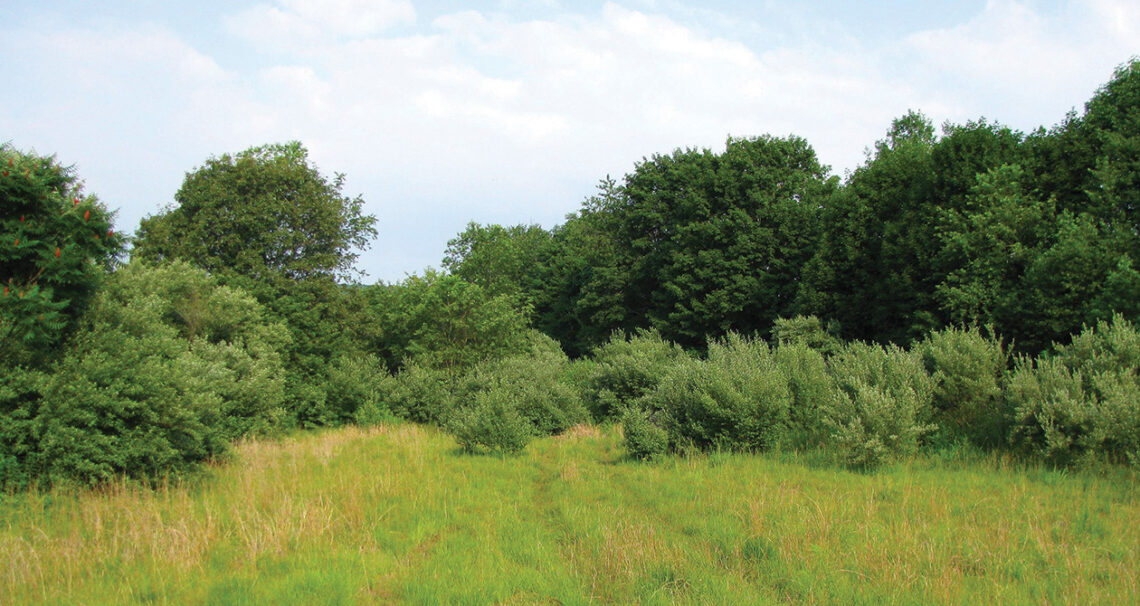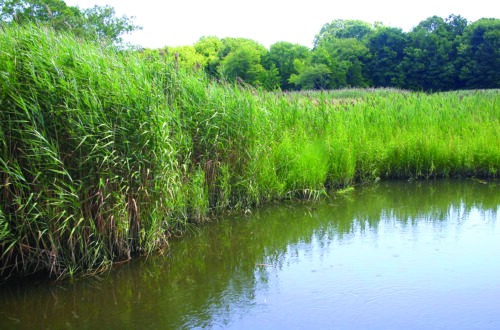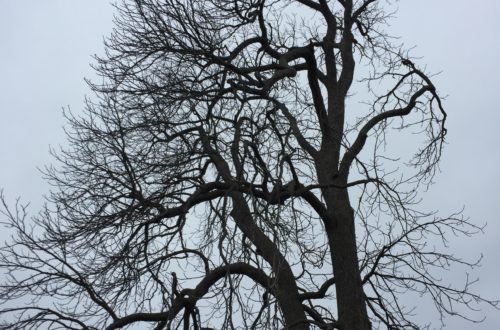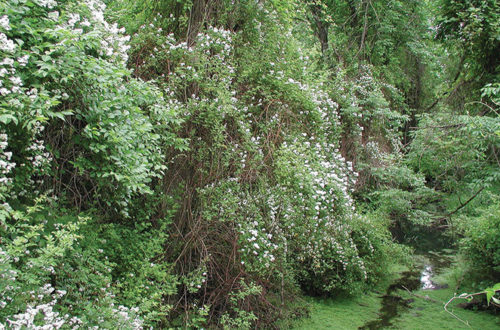AUTUMN OLIVE (Elaeagnus umbellata) is a large deciduous shrub or small tree that’s considered invasive in Connecticut. Native to Eastern Asia, from the Himalayas to Japan and Korea, it’s also called Japanese silverberry, Japanese oleaster and cardinal olive.
Introduced to the U.S. in 1917 it has been used as an ornamental but also for wildlife habitat and erosion control. In Connecticut it was routinely planted along the sides of highways.
Identification
Autumn olive can grow to 20 feet or more. It has alternate oval leaves with wavy margins. The 2-4 inch long leaves
are gray-green on top and silver underneath. Some branches may have sharp thorns.
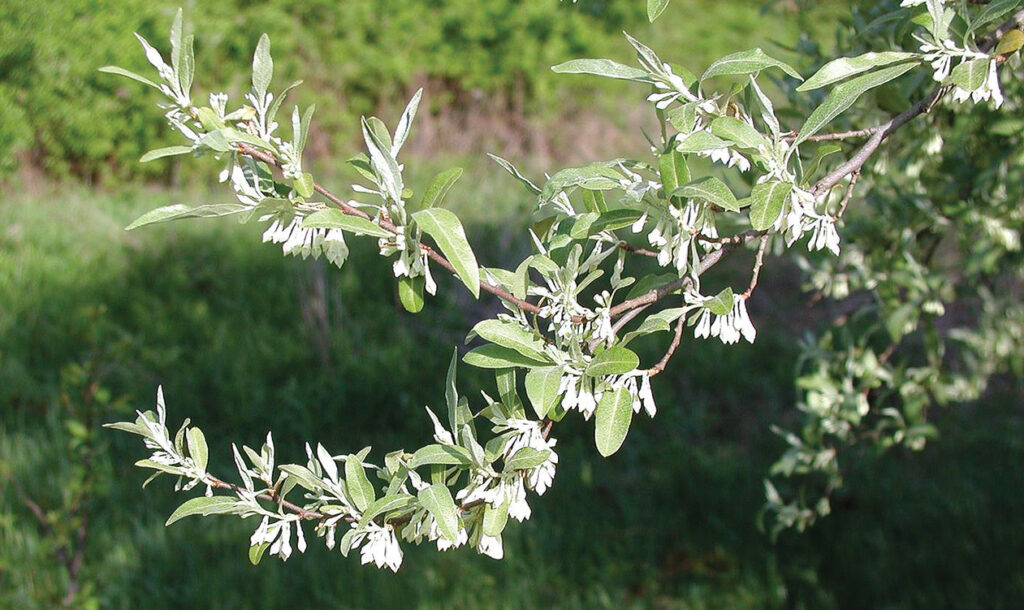
The fragrant flowers are arranged in clusters at the leaf axils, They’re creamy white to pale yellow, about a third of
an inch wide and have four petals.
The fruit starts out brown or silvery but changes to yellow and finally red in the fall. The quarter inch fruit has tiny brown or silver dots.
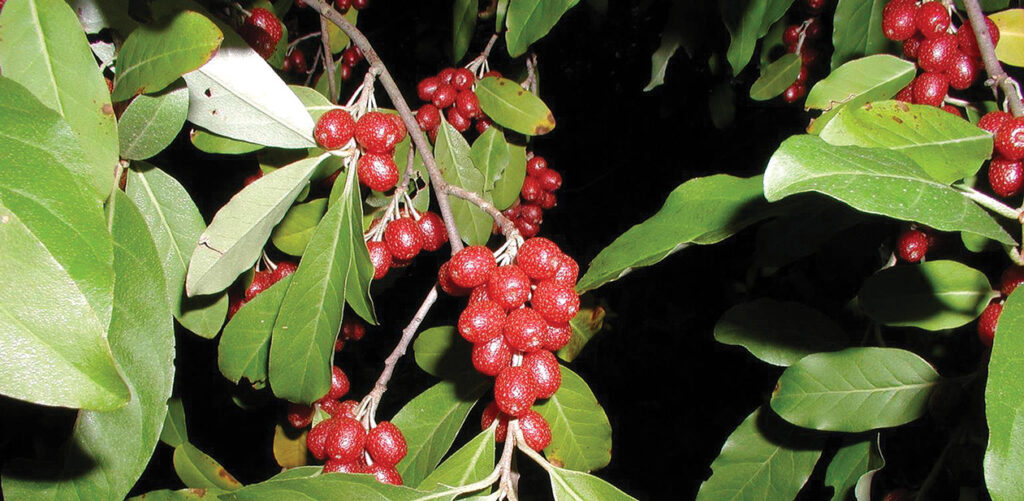
Reproduction
Autumn olive reproduces via seed. It’s a vigorous self-sower and birds and other wildlife help distribute the seeds. An individual plant can produce 200,000 seeds and 80 pounds of berries.
The Problem
Autumn Olive grows into thorny thickets. It outcompetes native species and interferes with natural nutrient
cycling.
The roots have nodules with actinomycetes that can fix atmospheric nitrogen. As a result it can grow in infertile areas that have low levels of nitrogen.
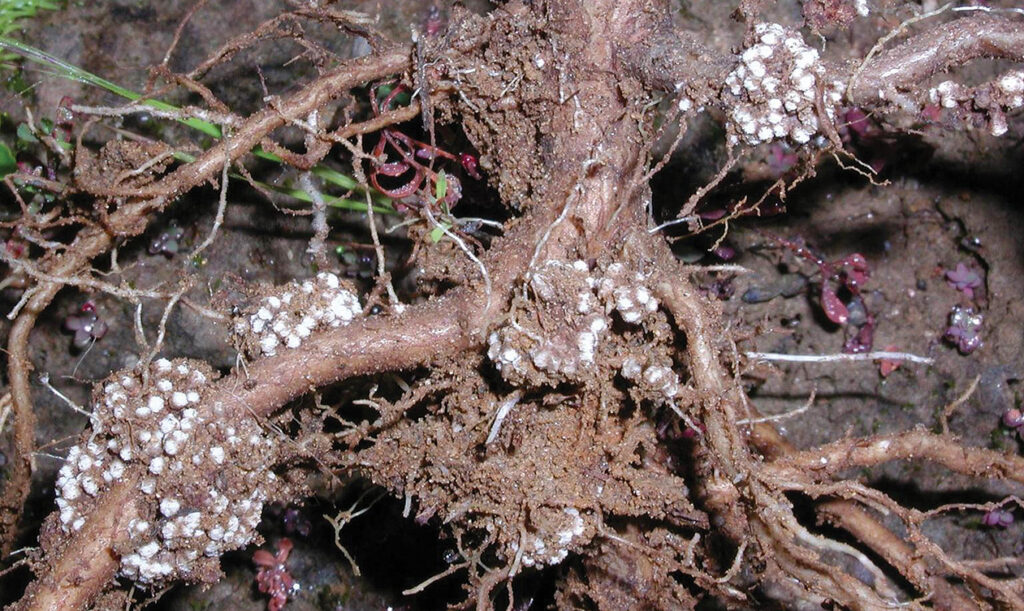
Look-alike
Russian olive (Elaeagnus angustifolia) has longer leaves that are silver on both sides. It has more thorns than Autumn olive and yellow or reddish-brown fruit. It is also considered invasive in Connecticut. Autumn olive is more prevalent in the eastern United States while Russian olive is more common in the West.
Control
Hand pull seedlings and make sure to get any taproots. Dig out the roots of larger plants or cut when in flower and apply a systemic herbicide such as triclopyr to the stumps. Large trees may need to be girdled. Herbicides or vigilance is required as it resprouts vigorously after cutting or burning. Seedlings are readily eaten by goats and sheep.
